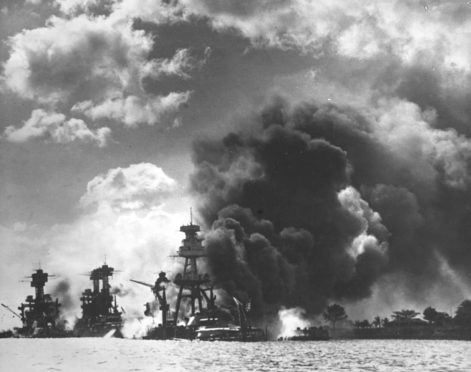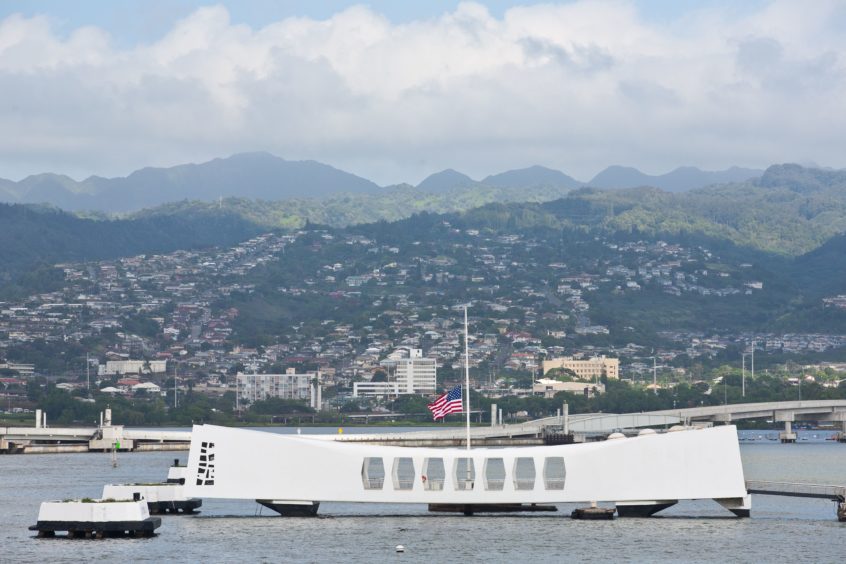In 1941, Dundee man James Clark Anderson must have watched with trepidation as World War II engulfed Europe.
By then Anderson, the son of a yarn bleacher whose parents married in Brechin in 1862, was an ocean away from the conflict, having emigrated to America to start a new life in Kansas City, Missouri, with his wife Josephine.
However, the fourth of the couple’s five children, Robert Adair Anderson, had joined the American navy aged 19 in 1939 and was assigned to the ageing battleship Arizona as a Gunners Mate third class.
On December 7 1941, 78 years ago today, he would enter the history books as a victim in one of the turning points of the Second World War.
It’s thought Anderson was the only man with Tayside links to lose his life in the surprise attack by the Japanese on Pearl Harbour in Hawaii, which triggered America’s entry into the fighting.
Just before 8am local, time, an assault involving more than 350 Japanese aircraft launched from four aircraft carriers and supported by a fleet of small submarines claimed the lives of more than 2,300 American service personnel – Robert Anderson among them.
Figures vary, but according to the Imperial War Museum, 18 US warships were sunk or damaged and 188 aircraft destroyed in an attack that lasted for less than two hours.
Anderson’s ship, the Arizona, was hit within minutes.
Suffering three near-misses and four direct-hits from 800-kg bombs, the last bomb penetrated her deck and detonated within a powder magazine.
The massive explosion broke the ship in two and collapsed her forecastle decks, creating such a huge cavity that her forward turrets and conning tower fell 30ft into her hull, killing 1,177 of her crew.
The Japanese forces turned for home, but crucially, much of the harbour’s infrastructure and fuelling systems remained intact and America’s three aircraft carriers, a vitally important part of the Pacific fleet based at Pearl Harbour were not there that day.
The next day, America declared war on Japan.
Just six months after Pearl Harbour, the US caused irreparable damage to the Japanese navy at the battle of Midway in June 1942. However, the war between the Allies and Japan ground on until 1945.
Today, the Pearl Harbour area is designated national historic landmark and in 2016, Japanese premier Shinzo Abe visited the site and offered “sincere and everlasting condolences” to the victims of the attack.
He said: “We must never repeat the horrors of war again, this is the solemn vow the people of Japan has taken.”
Robert Anderson, along with some 900 of his shipmates remains entombed within the hull of the Arizona and a memorial plot in his honour is in the Mount Moriah Cemetery in his hometown of Kansas City.











